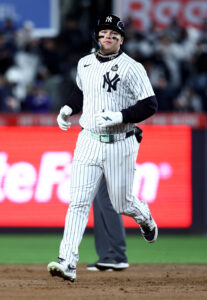TODAY: The Braves released Verdugo after he cleared waivers, the Athletic’s David O’Brien writes.
JULY 2: The Braves have designated outfielder Alex Verdugo for assignment, reports Ken Rosenthal of The Athletic. Verdugo’s spot on the roster will go to fellow outfielder Jurickson Profar, who will be reinstated from the restricted list after serving an 80-game PED ban.
Verdugo, 29, signed a one-year, $1.5MM contract with Atlanta late in the offseason. He first filled a reserve role behind Jarred Kelenic but wound up thrust into a more prominent role when Kelenic’s prolonged struggles to hit big league pitching saw him optioned to Triple-A Gwinnett. Verdugo raced out to a hot start with the Braves, hitting .322/.385/.441 in his first 65 plate appearances, but his production has cratered since that time. Dating back to May 6, Verdugo has registered an anemic .203/.257/.225 batting line (37 wRC+) in 148 turns at the plate.
This year’s run with the Braves largely mirrors Verdugo’s 2024 with the Yankees. His early hot streak in New York lasted longer than his hot streak in Atlanta, but his struggles as a Yankee were also more protracted. Verdugo has now tallied 834 plate appearances across the past two seasons and generated a dismal .234/.292/.339 batting line. That’s a far cry from his 2019-23 form, when he batted .283/.338/.432 and served as a solid regular in the outfield corners for the Dodgers and Red Sox.
Even Verdugo’s once-excellent defensive grades have deteriorated in recent years. Defensive Runs Saved still gave him a slightly positive mark (+1) in 426 innings this season, but that’s nowhere near his 2019-24 levels, when he garnered a gaudy +31 mark in 6150 innings. Statcast’s Outs Above Average pegged Verdugo as a scratch defender in 2024 but has him at minus-5 in 2025. Verdugo’s sprint speed used to rank well above average but is now in the 21st percentile of big leaguers, which has obviously cut into his range in left field.
The Braves can trade or place Verdugo on outright waivers at any point in the next five days, although given his guaranteed salary and lack of production, the likeliest outcome will be a release. If and when he clears release waivers, any other club could sign Verdugo and owe him only the prorated league minimum for any time spent on the major league roster. That sum would be subtracted from what Atlanta owes him, but the Braves will remain on the hook for the vast majority of his 2025 salary.



